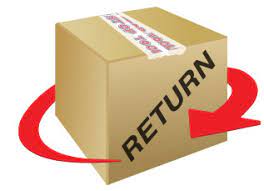
How to return the products
Jul 07 - 2021

E-COMMERCE: A Progressive Train from the 20TH Century through the 21ST Century.
If you consistently buy shoes, bags, clothes,
electronics, or even some services online, you’d agree the process is as easy as
riding a bicycle. It’s interesting and progressive to know that this wasn’t
always the case. Especially years or a century ago. ‘What was ẹ commerce like
in the 20th century as against now?’, 'I can't deal without internet. What was it
like for our forefathers not to have any digital footprints? '' Is Ecommerce
advancing or are at the same point?' are likely questions bugging your genius
mind.
But you are not alone. At Arfa (INCLUDE AFRA LINK), we’ve asked the same questions and sought
answers. In this article, you’ll be put out of your misery with comparative answers
about both centuries.
To start with, according
to Dr. Roger Clarke of The National Office for the Information Economy, ‘E-commerce
is a type of business transaction or interaction in which the participants
prepare or conduct business or businesses electronically. It is also defined as
a conduct of commerce in goods and services via electronic devices and
telecommunications. With the extent of the COVID-19 pandemic, E-commerce has
increasingly become the popular way and norm of business in the 21st
century.
A
Progressive Commercial Tool: From Document Shares to Business tool
With the passage
of time and improvement in technology, 21st-century business
ventures have utilized eCommerce for more than just exchanging documents. It is
now an effective tool for reaching more customers. With numerous business
ventures building their businesses online, at first, through eCommerce
platforms like ours (INSERT LINK TO CREATING AN ARFA STIRE), before opening a
physical store/office to boost sales up traditionally. One wouldn't be
surprised to find more online stores created in 1 year than there ever were in
the 20th century.
To grasp a
distinct picture of Ecommerce in both centuries, we’d have to briefly go down memory
lane and examine the early years of the business model. Like online shopping, e-commerce
began to share business documents between vendors and their business clients
online. This was as far back as 1960-1983. Between 1982-1990, online shopping
efforts got better at the arrival of the "World Wide Web" to the
mid-90s where major advancements in the commercial use of the internet were
noticed. In 1991 when the internet was pulled into the spotlight, Amazon was
one of the e-commerce sites in the US to start online business transactions,
and all other businesses followed suit.
An
Innovative Technology
The significant
change in e-commerce cannot be overstated, as many people have identified it to
be the most effective use of modern communication technologies. Because of its
wide range of influence on the present-day market, retailers consider the
eCommerce model an innovative way to sell their products without worrying about
the cost of operating a physical store. Money spent on unnecessary transaction
costs coupled with sales, marketing, purchase, financial cost, logistics, etc.,
has been reduced to the bare minimum.
Ultimately, this
has increased reach, access, and ease for business owners and consumers in the
21st century compared to the 20th. E-commerce is now an
essential global technology that is beneficial to both entrepreneurs and
consumers, with its ability to provide equal opportunity and access to
companies and trade all over the world, causing industrial globalization.
Increased
Need for Analytical Tools
Another
comparative difference between eCommerce in the 20th and 21st
century is the need for analytic tools. Although analytic tools were available
in the 20th century, most business owners were not familiar with
their use, nor did they see its need. Counterintuitively, business ventures,
particularly retailers in this age, use analytic tools to track consumer
preferences, know how to apply and adjust their business strategy to suit the
ever-evolving market. Producers are not left out in the benefits of analytic
tools, as they are updated and progressive in their business journey towards
attending to the needs of wholesalers and retailers more efficiently. The chart
below shows the progression of e-commerce sales worldwide from 2014 to 2021.

Source:
Pinterest.
Increased
Consumer needs and Security awareness
The growth in
e-commerce activities, as shown above, is related to the rapidly changing needs
of customers. Customers are insatiable and always wanting more.
Around 2004 it was observed that the use of
online payment security was very necessary. This would not have been taken so
seriously if there were not great changes and expansion in the e-commerce
world. Customers needed a form of protection for their online paying methods,
leading to innovation and growth from banks, website developers, and other
digital commerce stakeholders. This significant commercial innovation and
growth widens the progressive bridge between e-commerce today and in the 20th
century.
Finally, E-commerce in the 21st century has evolved beyond
buying and selling through the internet. Different models and applications now
exist in the niche, making eCommerce a wide-ranged industry. Some of these models
are business to business (B2B), business to consumer (B2C), consumer to
consumer (B2C), and consumer to business (C2B) model, amongst others. With the
pace at which technology has been improving over the past years, and commercial
data and statistics, we expect Ecommerce to evolve in a mind-blowing way.
We’d end this article with you answering these questions. Are you a Conservatism
that prefers the 20th century eCommerce of sharing documents? Or are
you for the commercial evolution? Where do you see in eCommerce in 10 years?
We’d like to hear from you, so leave a reply!